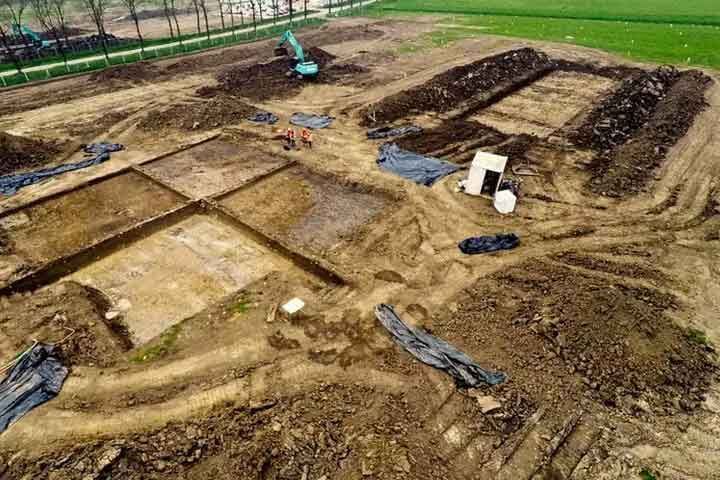Archaeologists in the Netherlands have made a groundbreaking discovery. A 4,000-year-old shrine was unearthed in the central part of the country, complete with a solar calendar. The town of Tiel announced the discovery in a statement on Friday.
The shrine was a remarkable feat of construction during its time, evident from a reconstruction sample that was revealed to the press last Wednesday. Taking six years to complete, the excavation revealed seven mounds of earth located at the Medel industrial estate.
The lavish shrine was used for almost 800 years as a location for celebrations, rituals, and as a burial site. Remarkably, the archaeologists uncovered the remains of 80 people within the site. One of the mounds was used as a calculation device in the form of a solar calendar, providing an innovative way to determine the time of year.
While many impressive artifacts were discovered, the glass bead stands out as the most interesting. The bead is believed to be a product of Mesopotamia and is the oldest object ever discovered in the Netherlands, indicating that the people of Medel had contact with others living 5,000 kilometers away.
Speaking to reporters, municipal archaeologist Ilse Schuuring said that the discovery was a remarkable achievement, “The discovery of a 4,000-year-old shrine in the Netherlands represents an exciting and significant moment in our archaeology history. The shrine is a testament to the ingenuity and craftsmanship of the ancient population in the Netherlands.”
A thorough scientific report of the discovery will be published in the fall following further research.
This discovery highlights the cultural richness of the Netherlands in its distant past and serves as a reminder of how connected different civilizations were, even thousands of years ago. The site provides a glimpse into rites and rituals that were performed, immortalizing the people of that time and the society in which they lived. As researchers continue their work, the discovery promises to reveal even more fascinating and profound insights into the history of this region, leading to new discoveries and a greater understanding of our collective past.















